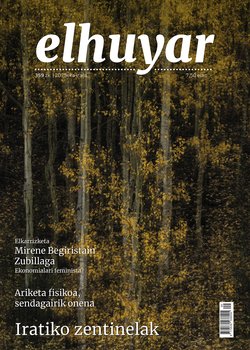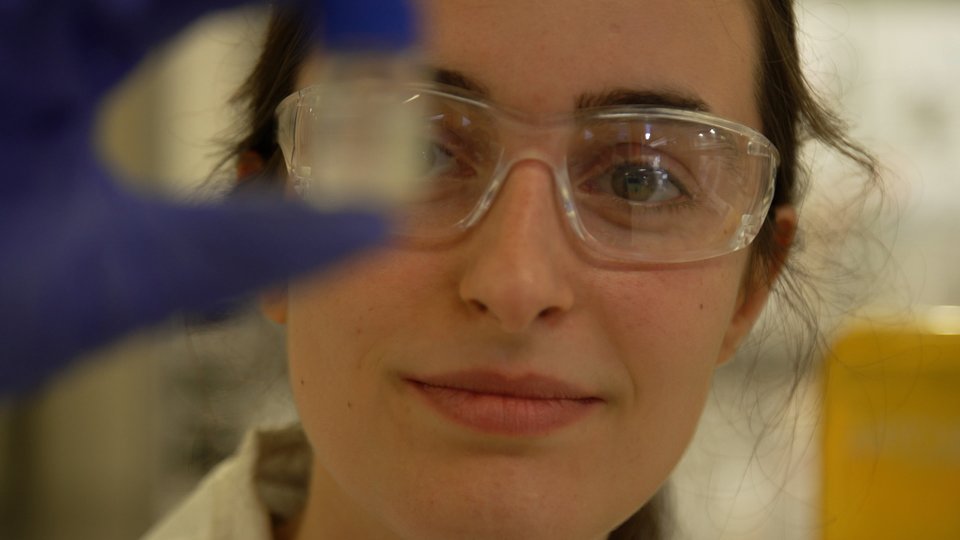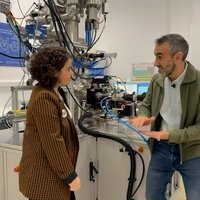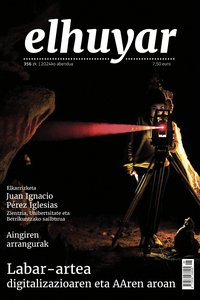On Science: the best of the month
The time has come to select the best of the month among all the works that have been submitted to the On Ciencia video contest. And as you know, this is the role of a well-known person. This month, the athlete Naroa Agirre will explain to us what, in his opinion, is the best work of November. The author of the video is Dani Morcillo. Dani is a biologist who works as a teacher in high school. He was also the winner of last year’s On Science competition. Happy birthday, Dani.
Naroa Agirre, athlete: I didn’t have an easy job with the selection, as the videos were very different. On the one hand, there were some videos made by the students; on the other hand, there were traditional or traditional documentaries; and, finally, there was a documentary that I found more innovative.
It’s been hard, because everyone has things to stand out about, but I’ve finally decided to pick the one that talks about birds. I chose this documentary because I found it interesting and I didn’t know it.
That the bird's beak is adapted to the food they eat. The documentary shows this: why some birds have a flattened beak, others longer, others shorter. In addition, he explains it with examples and very clearly. I learned more from this documentary. I don’t want to say that I didn’t learn anything from the others, but considering that I didn’t know anything about it, I found it very interesting.
THE VIDEO:
Dani Morcillo, biologist: It is not uncommon for many books about birds to have a section about the shape of their beaks and legs. The beaks tell us what these species eat, while the legs tell us about their habitat. Both are also used as criteria for classification and identification of species.
In the 19th century, Charles Darwin, on his famous trip to the Galapagos Islands, observed that the finches had a peak according to the food of each island. This helped him to formulate the theory of evolution by natural selection. Whether Darwin is right or not, it’s clear that each beak is precisely designed to capture the food it needs to capture.
The beak is made up of two bone jaws without teeth and is covered with a corneal sheath called an amphoteca. Often, this portfolio has vivid colors, and some species even have the ability to change.
In some cases, the color of the beak and legs, as well as the lumen, is due to feeding. The flamingos, in order to feed themselves, filter the mud and capture small animals that, however, eat some of the bacteria that produce the pink pigment. And in this way, young and old flamingos are easily distinguished, since young people have accumulated less pigment.
The beak is a tool that works for almost everything, it serves both for combing and for nesting; however, it is a bit tiring to drink: it does not allow sucking and it must be filled as if it were a container. It is normal to use it for food, without a doubt.
Finding food in the water is a difficult task. Swans need the right legs to kick when they swim. Their fingers are joined by a membrane, while their legs are further back, so they walk clumsily. Several seabirds are fully submerged and submerged. In this case, each finger is independent, but has a flattened shape, making it easier to swim.
For the capture of small creatures, the peaks are also small and very fine. Insect birds are large eaters that eat large amounts of insects that are annoying to people every day, such as mosquitoes.
To capture larger creatures, predatory birds dominate. Their adaptations give them a high efficiency for hunting. They've got the wrong beak and the crochet, ready to snatch the meat. They have strong and sharp claws; once the hunt is caught, there is no escape. In addition, the species hunters have both eyes facing forward, so they have a perfect three-dimensional view, which is very useful for calculating distances. On the other hand, birds that are hunters have eyes on both sides of their head and have a greater angle of view to detect possible predators. It is not clear whether having separate eyes requires a long beak or whether the long beak facilitates separation of the eyes. However, it is common for birds to have something in between.
The herons, with their dagger-shaped beak, can harpoon frogs and fish with absolute precision while keeping an eye on them even if an enemy were coming. Because they have long legs, their body stays out of the water and they have the opportunity to see it from above. The bibs seem to have socks: the color of the fingers is mixed with the sand bottom, so the legs look like vegetable branches that could be a refuge for the fish.
If the beak does not have a particular shape, the birds adapt their behavior by means of surprising hunting techniques. The name of the bird that is called the “pebble” is no coincidence: they look for food under the pebbles of the water’s edge.
The beaks have a large spoon as their beak, but that doesn’t explain what they eat until we see them in it. A splash of fish has arrived and not only has it attracted broad beaks. Some annoying cormorants are also approaching the party. They often hunt in groups, getting into the water and taking advantage of escapes caused by other birds.
Dani Morcillo, biologist: As we have seen, the designs of the birds' beaks and legs are varied and adapted to the habitats in which they live. It is up to us to take care of these ecosystems so that we can continue to talk about bird issues in the future.
Buletina
Bidali zure helbide elektronikoa eta jaso asteroko buletina zure sarrera-ontzian










